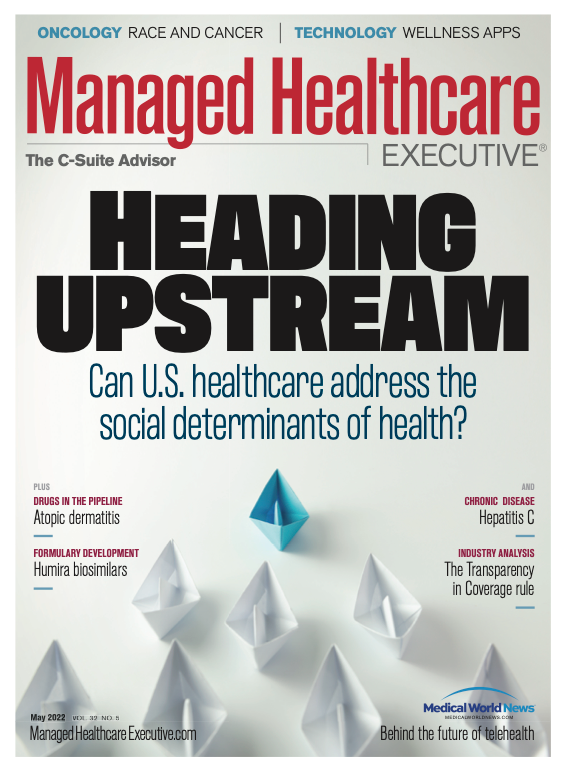Positive Outcomes for SDOH Interventions: A Q&A With Kate Sommerfeld
Kate Sommerfeld, president of the Social Determinants of Health Institute, spoke about efforts to address social determinants of health (SDOH) gaining traction, taking an interconnected approach and using data analytics to understand the value of the efforts to address SDOH.
Proograms to address social determinants of health (SDOH) have shown striking success, one executive says. Now the task is to apply them more broadly.
Kate Sommerfeld

Kate Sommerfeld is president of the Social Determinants of Health Institute and vice president of community relations and social investment for ProMedica in Toledo, Ohio, which has a dozen nonprofit hospitals in its region plus a health insurance division and a senior care division that serves 28 states. Its 3-year-old Social Determinants of Health Institute helps nonprofit health systems and payers across the country do SDOH interventions. Recently she spoke with Managed Healthcare Executive®.
ProMedica has done ambitious work in Toledo’s UpTown neighborhood, yes?
Yes. Seven years ago, in what was once a food desert, we opened a grocery that has served 58,000 customers. We’ve helped (approximately)
200 homeless individuals connect to services and get housed. We’ve connected 5,000 individuals to jobs and support and provided financial coaching to more than 800 people, increasing their average monthly income by $352 and helping them raise their credit scores by an average 79 points. And among 1,753 participants in our food clinic, we’ve seen a 20% reduction in (emergency department) visits (compared with a 12% decline for similar patients not enrolled in the program), with $6,400 in savings.
Can you prove your success with statistics on health status itself?
That’s difficult; health outcomes are the last piece to measure. But across the country we’ve seen some very small pilot programs where we’re able to measure health outcomes. Where we see that most is in our work in maternal health. We’re scaling a program that connects high-risk expectant moms with community health workers, and it has shown improved birth outcomes and decreases in NICU (neonatal intensive care unit) stays.
Isn’t addressing SDOH mostly a matter for Medicaid?
That’s one of the myths. Actually, a great many Medicare patients and almost 50% of the commercial patients who come through our doors (have) some type of need. Social and economic factors really span across populations and demographics.
What have you learned from your experience with SDOH?
One, that this work is all interconnected and it really takes a village — the integration of payers and providers, community members, nonprofit organizations, even employers. Two, we’ve been able to use teleservices, especially during the pandemic. For example, we’re now providing financial coaching across the country virtually. Three, it’s critical to engage the people we’re serving in the decision-making process. No longer can we in healthcare sit in our office buildings and hospitals and create solutions by ourselves.
Is healthcare still struggling to get a grip on SDOH?
Especially in the aging population, we’ve seen an uptick in social isolation, which COVID-19 has exacerbated. That’s an area where we’re still really testing and piloting. From an industry perspective, we’re trying to understand what moves the needle. I’d also cite the need for scalability. Many initiatives in individual markets are working, but we’ve got to figure out, Can you get those to scale? Can you do them across markets?
The use of data is key, isn’t it?
Part of our work is focused on ROI (return on investment). That’s our north star at the end of the day — to be able to prove which interventions are effective. So we use data analytics. We partner with the startup tech firm Socially Determined (based in Washington, D.C.), which braids together our intervention data with EMR (electronic medical record) and claims data sets to understand what drives value.
Any lessons in the use of data?
We see patients for a very limited time, so we’ve been focused on creating seamless, no-touch workflows integrated into the EMR. As more providers get into this space, those who were going in a different direction come back to this approach from an efficiency and effectiveness perspective.
What’s next?
We’re starting to use a proactive approach, not waiting until someone comes into our doctors’ offices or hospitals but targeting individuals and populations that may not be getting care today but have a social determinant need.
Despite everything you’re doing, is the SDOH effort is still just getting off the ground nationally?
I’m a little more optimistic than that. Payers are now starting to fund different social and economic supports. We closed 2021 with eight different contracts with payers who are providing food funding and financial coaching. And CMS is offering innovation grants to fund things like this. I think we’re starting to see the momentum shift.

Breaking Down Health Plans, HSAs, AI With Paul Fronstin of EBRI
November 19th 2024Featured in this latest episode of Tuning In to the C-Suite podcast is Paul Fronstin, director of health benefits research at EBRI, who shed light on the evolving landscape of health benefits with editors of Managed Healthcare Executive.
Listen
A Motor Neuron Mystery Points to New Potential SMA Treatment Targets
December 20th 2024Some muscles are resistant to the loss of motor neurons seen in patients with spinal muscular atrophy, and new research has discovered that even in muscles that appeared resistant to SMA, subtle changes had occurred at the cellular level.
Read More
In this latest episode of Tuning In to the C-Suite podcast, Briana Contreras, an editor with MHE had the pleasure of meeting Loren McCaghy, director of consulting, health and consumer engagement and product insight at Accenture, to discuss the organization's latest report on U.S. consumers switching healthcare providers and insurance payers.
Listen